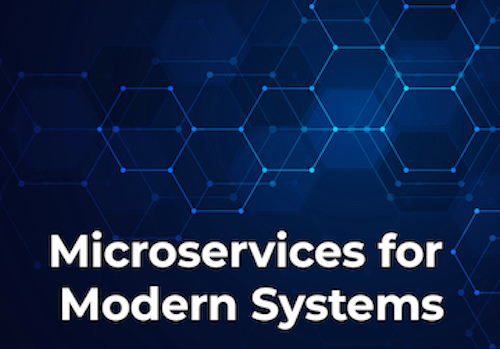Microservices: The Architecture that Runs the Cloud
In past decades, software applications for organizations and enterprises were built as single systems designed to fulfill multiple business needs. These applications are often referred to as monolithic due to their enormous size and cumbersome nature. In a monolithic structure, all functionalities rely upon one another, making them very difficult to update or maintain—making changes in one area can create unknown failures in others. Additionally, maintenance and upgrades can be a very heavy burden not just for the system administrators, but for the business as a whole. Entire areas within the organization are often offline for hours or even days as administrators hold their breath to make sure the new/upgraded applications don’t break something else.
 One of the most important architectural advances since the rise of cloud computing is microservices. Though not necessarily tiny in size, microservices offer an alternative by breaking down monolithic applications into multiple, single-purpose services that interoperate with—rather than depend on—each other. These decoupled services are highly flexible, scalable, reliable, and can run simultaneously across multiple applications.
One of the most important architectural advances since the rise of cloud computing is microservices. Though not necessarily tiny in size, microservices offer an alternative by breaking down monolithic applications into multiple, single-purpose services that interoperate with—rather than depend on—each other. These decoupled services are highly flexible, scalable, reliable, and can run simultaneously across multiple applications.
Microservices also make processes more efficient. They have the ability to communicate with one another to make a complete system and enable teams to use agile software development practices to deliver constant, ongoing software releases rather than forcing administrators to rely on single time-intensive upgrades.
From a business perspective, microservices can fulfill customer and employee requirements on an as-needed basis to provide new services and functionality. Their efficiency often means faster time to market on new products and services, and since they can be developed independently, organizations experience reduced risk with minimal business disruption.
Preparing to Move to a Microservices Environment
When considering modernizing monolithic applications and making the move to a cloud-based microservice architecture, you must first assess, tune, and optimize your applications for a successful effort. Consider these items when preparing for a modernization of your legacy mainframe systems to bring them up to par with today’s architectures and languages:
- Know your systems.
- In order to successfully modernize, understanding your existing systems is key. Obtain documentation and a detailed blueprint of your current architecture.
- Assess the appropriate target language.
- Microservices can be written in many different modern computing languages. Your business and operational needs can help drive this decision.
- Understand your data model.
How will your data interact with the microservices you build or employ, and how do you ensure that you do the appropriate due diligence to protect your own data as well as your customers’?
- Decide on cloud vs. on-premises (private cloud) deployment.
While cloud infrastructure becomes more secure by the day, if your systems are highly classified or include sensitive personal information, you may want to modernize to a private cloud that still allows you to employ microservices.
- Additional considerations – automation and refactoring.
While there are many different approaches to software modernization, the most accurate, efficient, and cost-effective option is a fully automated solution. Automation provides significant advantages over manual enhancements, not the least of which is a huge reduction in risk due to the introduction of human error to the modernized application.
A fully automated modernization includes a key component known as architectural refactoring. With refactoring, the application is re-engineered to improve the modernized system’s architecture, user interface, and maintainability. This iterative process also includes the removal of dead and redundant code while improving the quality and effectiveness through each pass. The refactoring process retains the functional equivalency of the original application while making the system more flexible, microservice compatible, and ready for cloud deployment.
Getting Across the Finish Line to Microservices and the Cloud
Modernizing your monolithic applications to microservices and the cloud is no easy feat. It will take a team of experts to not only focus on the tactical modernization of the software, but also work closely with you to put your organization on the path to success. This means working to understand your existing architecture with an assessment and documentation, developing a roadmap to your target language and architecture, and finally, getting you across the finish line with a fully modernized and improved application that’s ready for microservices and the cloud. This start-to-finish partner will be an invaluable ally in your efforts.
------
TSRI is Here for You
As a leading provider of software modernization services, TSRI enables technology readiness for the cloud and other modern architecture environments. We bring software applications into the future quickly, accurately, and efficiently with low risk and minimal business disruption, accomplishing in months what would otherwise take years.

